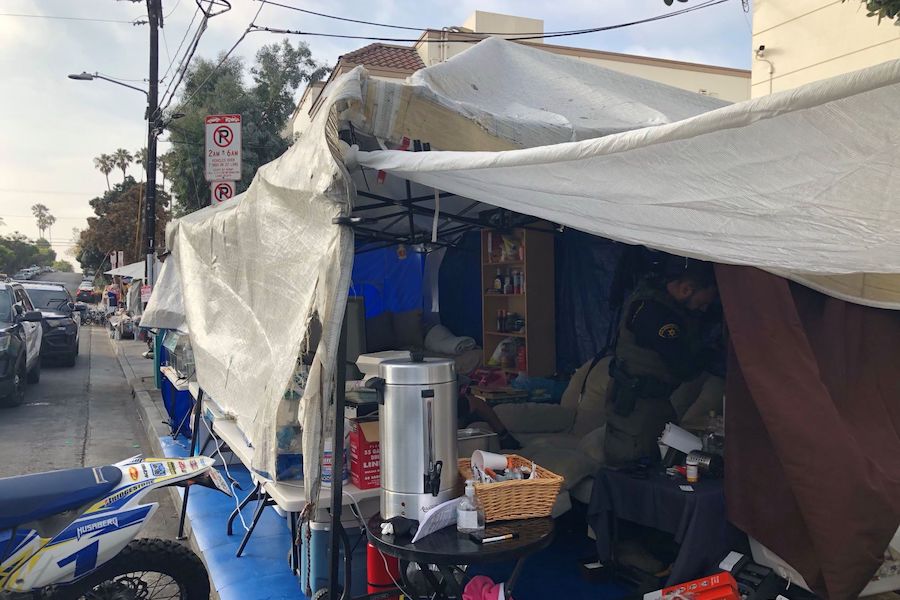California Secretary of State Alex Padilla, 18 state legislators file amicus curiae briefs
By Sam Catanzaro
The California Secretary of State and 18 state legislators who contributed to the enactment of the California Voting Rights Act have filed letters on behalf of plaintiffs in a lawsuit against the City of Santa Monica that contends the city’s at-large election system violates the CRVA.
The case filed by plaintiffs Pico Neighborhood Association, Maria Loya and Advocates for Malibu Public Schools alleges that Santa Monica’s at-large election system dilutes Latino voting power in violation of the California Voting Rights Act (CVRA) and discriminates against Latino voters in violation of the Equal Protection Clause of the California Constitution.
In a ruling released February 15, 2019, Los Angeles Superior Court Judge Yvette M. Palazuelos ordered that all future elections for seats on the Santa Monica City Council be based on a seven-district map drawn by an expert for the plaintiffs, including a 30 percent Latino district. The City then appealed this decision.
On July 9, 2020, a three-judge panel from the California 2nd District Court of Appeal ruled in favor of the city saying that Latinos, who account for 14 percent of Santa Monica’s electorate, lack the numbers to win an election in the 30 percent Latino district ordered by Judge Palazuelos.
On August 18, the plaintiffs asked the Supreme Court to review the appellate court’s decision.
California Secretary of State Alex Padilla on Tuesday, September 7 submitted an amicus curiae brief challenging the appellate court’s ruling that Latino voters in Santa Monica are not concentrated enough to constitute a district with a majority needed for Latino candidates to win.
“The Court of Appeal’s opinion, however, threatens to interfere with the ability of aggrieved plaintiffs to obtain relief from voting rights violations the CRVA was specifically intended to remedy,” Padilla wrote. “Contrary to the Court of Appeal’s characterization of evidence – or lack thereof – that an influence district could translate into electoral success, the trial court highlighted such evidence in its Statement of Decision, including reference to a study that found in districts with a minority population of even less than 30% of a district’s electorate, previously unsuccessful candidates in at-large elections, won in district elections.”
“The trial court found that Plaintiff’s expert witness David Ely’s seven-district plan would increase the ability of Latinos to influence the election, or elect their candidate of choice,” Padilla added.
Padilla’s letter comes after an amicus curiae brief was submitted by 18 California legislators, all of whom served in the California Legislature in 2002 and contributed to the enactment of the CVRA. Among these legislators include the principal legislative author and sponsor of the CVRA, retired Senator Richard Polanco, as well as five members of the Elections and Judiciary committees that reviewed and approved the CVRA before it was approved by the full Senate and Assembly.
“The electoral history and political dynamic in Santa Monica perfectly demonstrate why a majority-minority district requirement makes no sense in California. The Superior Court adopted a seven-district map, with a remedial influence district, centered on the Pico Neighborhood, in which Latinos comprise 30% of the eligible voters. Latino candidates, strongly preferred by Latino voters, received the most votes in the Pico Neighborhood District but lost in the at-large elections. The Superior Court considered this election history, as well as the strong political organization of Latinos in the Pico Neighborhood, the extraordinary cost of citywide council campaigns in Santa Monica, the wide disparity in wealth between Latinos and non-Hispanic whites in Santa Monica, and the results of similar influence districts in other cities, concluding that Latinos could elect candidates of their choice in the Pico Neighborhood district, or at least influence the outcome of the elections,” reads the letter. “Yet, the Court of Appeal…ignored all of this, and held that without the potential for a majority-minority district there can be no ‘dilution.'”
In the City’s response to the Plaintiffs’ request for review by the California Supreme Court filed September 4, defense attorneys argued that Latinos are already electing candidates of their choice, bringing up the surnames of candidates.
“In focusing solely on Latino-surnamed candidates, the trial court disregarded the vast majority of candidates in Santa Monica’s elections over the past quarter century—even when those candidates received virtually unanimous support from the City’s Latino voters and won. This artificially narrow focus on candidates with Spanish surnames reflected plaintiffs’ reverse engineered and result-oriented presentation of the data,” the response reads. “These errors, among others, independently required reversal. When the undisputed facts are analyzed under the federal standards for racially polarized voting that the CVRA adopts, they confirm that Latino-preferred candidates usually win in Santa Monica.”
According to the City, in elections analyzed by experts, 73 percent of Latino-preferred candidates won—and of those who lost, only three were “even arguably defeated by white bloc voting,” the City argues.
“The same holds true if the analysis is limited, as plaintiffs argued, to only those eight Council elections in which a Latino-surnamed candidate ran—12 of the 18 Latino-preferred candidates (67%) won, and of the few who lost, only three were even arguably defeated by white bloc voting,” the City said. “Latino voters are already electing candidates of their choice. There is no cause to abandon the City’s well-functioning electoral system in favor of a districting plan that would limit rather than expand Latino voting power.”













